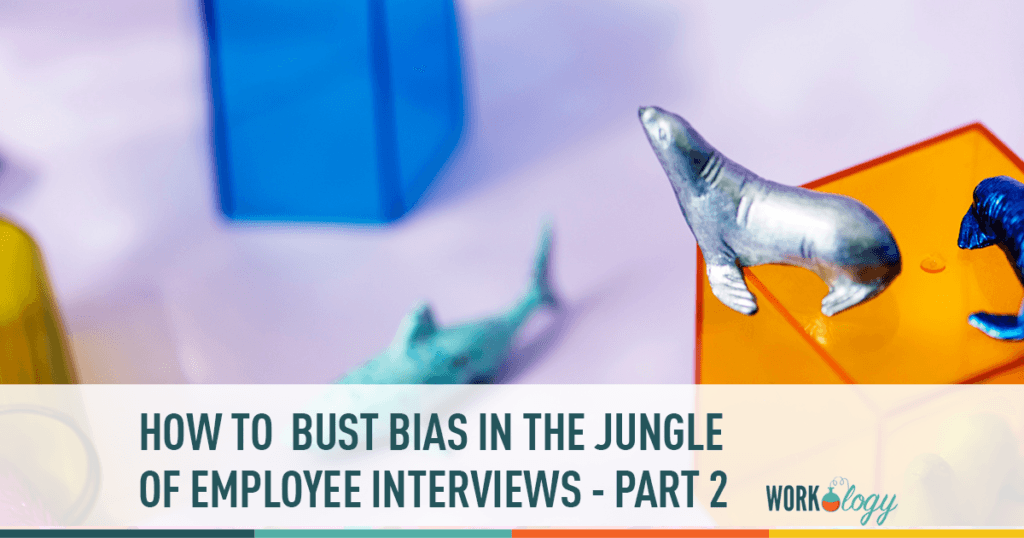In part 1 of this series, we discussed cognitive bias and how it impacts the interview process. This article is a deeper dive into the ways we can minimize these biases to improve our hiring processes.
How Ambiguity Affects Interview Outcomes
This study shows that a few factors minimized the bias against women in male-dominated jobs:
- Interview feedback that clearly indicated high competence of applicants
- Motivating interviewers to make careful decisions
- Having experienced professionals rather than undergraduates involved as interviewers
In other words, bias is reduced when we have an interview process that cuts down on ambiguous feedback and when we involve experienced interviewers who have bought into the concept of taking the process seriously.
The Power of the Structured Behavioral Interview
Decades of research show that structured behavioral interviews (SBIs) are valid for predicting performance and that candidates trust them. Wait, what? There’s a style of interviewing that can predict performance and provide a good candidate experience? Yes, it’s the humble structured behavioral interview. It may be as rare as the endangered Sumatran tiger, but it exists.
What is the Structured Behavioral Interview (SBI)? It’s a conversation that follows guidelines (a structure) to cover previously identified areas of competence (experience, skills) and then, ideally, rates that set of competencies on a behaviorally anchored rating scale (BARS). It is not a loose conversation about the candidate’s resume and life experience. It does not accept narrative, aspirations, and generalizations.
Why SBI Reduces Bias
The SBI method is quite detailed, requiring interviewers to make decisions based on criteria rather than emotions or spontaneous assumptions, which are more likely to be biased. SBI interviewers learn about circumstances, decisions, teams, and experiences that begin to throw light on facts. Rather than listening to the candidate’s story, interviewers engage in an open and casual discourse that elicits specific competencies through extra questions. Listening and then asking for missing information is required during the conversation until the interviewer has adequate comprehension to produce an evidence-based assessment of competency on the rating scale.
Common Objections to SBI
Because SBI is so regimented, interviewers must prepare, train, and practice to be successful. Hiring teams must be clear enough about what they are seeking for to identify the most important competencies. Then, structured inquiries that invite more probing queries into the capabilities and competencies under review must be designed. Ratings must be collected and reviewed, ideally in a user-friendly manner. All of these considerations make some businesses hesitant to embrace this technique, despite the fact that SBIs operate well in theory.
Planning is Key to SBI Implementation
It’s a jungle out there, but recruiters can help you through it. You can get around the following landmarks: pre-interview, interview session, and post-interview. Plan out what your interviewers will need to bring and leave during the interview, and remind them that recruiting blunders are simply a result of poor planning. Planning lowers the possibility of false negatives and false positives. A false negative occurs when interview teams reject a fantastic prospect because they did not meet unwritten rules. A false positive occurs when a team hires a candidate who flew through the interview process wearing a halo.
In such a candidate driven market, it may seem like there is no time to prepare for interviews. However, with unemployment below 5% and average time-to-hire across all industries hanging at about five to six weeks, we have the time. Equip your team to prepare while you source. In explaining his success at reaching the South Pole first in 1911, Roald Amundsen said,
“I may say that this is the greatest factor: the way in which the expedition is equipped, the way in which every difficulty is foreseen, and precautions taken for meeting or avoiding it. Victory awaits him who has everything in order, luck, people call it. Defeat is certain for him who has neglected to take the necessary precautions in time, this is called bad luck.”
Don’t go on your trip with a shaky hiring team. Lead them in defining what good looks like and what skills they will evaluate during their interviews. Then, encourage them to specify when and who will be responsible for assessing which of these specific competencies. Encourage them to specify which interviewer will ask which essential introduction questions. We have the ability to tame the wilderness. Structure leads to more predictable outcomes, fewer hiring regrets, and more stable teams. According to study, we are prone to bias when we lack structure.
In the final part of this series, we’ll discuss the role that technology can play in reducing bias during the interview process.









